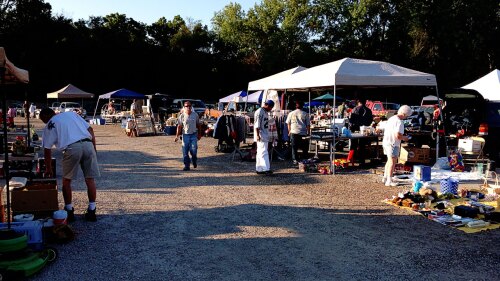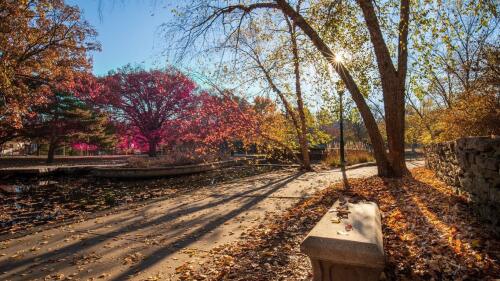Believe it or not, Kansas City once housed the second-largest meat packing industry in the nation (just behind Chicago) known as the Kansas City Stockyards — yeah, we’re looking at you, FTWtoday. Of course, this was long before the Country Club Plaza and sprawling high rises called the metro home.
Start of the Stockyards
In 1870, a group of railroad executives fenced off five acres in the West Bottoms and built small stock pens.
Just a year later in 1871, 13 more acres along the Kansas River were added to accommodate ~100,000 animals. The West Bottoms strategically tied the Missouri + Kansas Rivers for convenient business interests, and the rivers allowed for shipping routes and access to natural resources.
Sudden growth
Charles Adams Jr., grandson of former US presidents, purchased land in the West Bottoms in 1874. He was joined by Philip Armour, a Chicago meatpacker, and the pair began building an empire — employing 3,000 workers on an eight-building property.
45,000. That’s how many animals were processed in the first year. And from there, competition was born. In 1887, Chicago meatpacker Gustavus Swift built a 13-acre facility, and other business-hungry folk joined in on Kansas City’s market.
By the numbers
At its height in the 19th century, the Kansas City Stockyards:
- Covered 200+ acres
- Had a daily quota of 170,000 animals
- Represented 91% of the city’s industrial output
- Employed 20,000 people
- Received stock from 35 states + shipped to 42 states
Cue challenges
The Stockyards experienced a flood in 1903, a fire in 1917, and withstood five wars — but nothing compared to the flood of 1951. Many of the packing plants closed instead of rebuilding, and some farmers chose to negotiate with packers directly, cutting out the middleman. Additionally, the Stockyards encountered labor shortages when union workers walked out + went on strike as they endured pay cuts, and immigrant workers began replacing them.
The last cattle auction was held in September 1991, and then cowtown closed the doors on its 120-year run. An article that ran that day in The Kansas City Star noted rising costs and changing agricultural marketing patterns as the Kansas City industry’s fall.
Legacy left behind
In 1974, The City of Kansas City and the American Royal built Kemper Arena on the former Stockyards land — and the American Royal Livestock and Horse Show still lives on today. Renovation of the Livestock Exchange building began in 1990 and has since been leased to 70+ businesses.
The Golden Ox opened on the first floor of the Livestock Exchange building in 1949 and closed in 2014. It was known as the “oldest steakhouse in Kansas City” and was the birthplace of the Kansas City strip steak. It has since reopened under new management, and you can reminisce on the restaurant’s past by making a reservation here.













